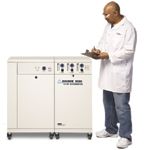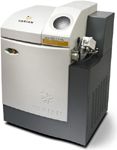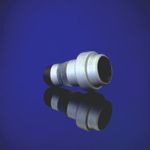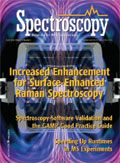Product Resources - MS
Product Resources - MS
LC–MS gas generation system
Parker Balston introduces the SOURCE LCMS-5000 LC–MS gas generation system, which produces nitrogen, zero air, and exhaust pump gases. It combines a compressor with coalescing filters, catalysts, and hollow-fiber membranes to produce these gases. Parker Hannifin Corporation, Haverhill, MA; www.parker.com

ICP-MS systems
Two ICP-MS instruments from Varian are designed for elemental analysis of complex samples. The model 810-MS and 820-MS instruments contain high-efficiency 90-degree ion optics and a double off axis quadrupole designed to provide low background noise and gigahertz sensitivity. The model 820-MS also includes the company's collision reaction interface, which reportedly enables the use of collision and reaction gases such as helium, allowing lower detection limits and more accurate quantitation for difficult elements in complex samples. Varian, Inc., Palo Alto, CA; www.varianinc.com

Electron multiplier
BURLE Electro-Optics' 5905 MAGNUM detector is designed to provide high dynamic range, increased gain stability, and near elimination of feedback noise. A proprietary glass formulation reportedly facilitates long detector life. The detector is designed specifically for Thermo Finnigan mass spectrometers; the electron multiplier cartridge is a plug-in replacement that fits directly in to the Thermo Finnigan mounting assembly. Its one piece construction eliminates fastener and connection problems. BURLE Electro-Optics, Sturbridge, MA; www.burle.com


Mass Spectrometry for Forensic Analysis: An Interview with Glen Jackson
November 27th 2024As part of “The Future of Forensic Analysis” content series, Spectroscopy sat down with Glen P. Jackson of West Virginia University to talk about the historical development of mass spectrometry in forensic analysis.
Detecting Cancer Biomarkers in Canines: An Interview with Landulfo Silveira Jr.
November 5th 2024Spectroscopy sat down with Landulfo Silveira Jr. of Universidade Anhembi Morumbi-UAM and Center for Innovation, Technology and Education-CITÉ (São Paulo, Brazil) to talk about his team’s latest research using Raman spectroscopy to detect biomarkers of cancer in canine sera.